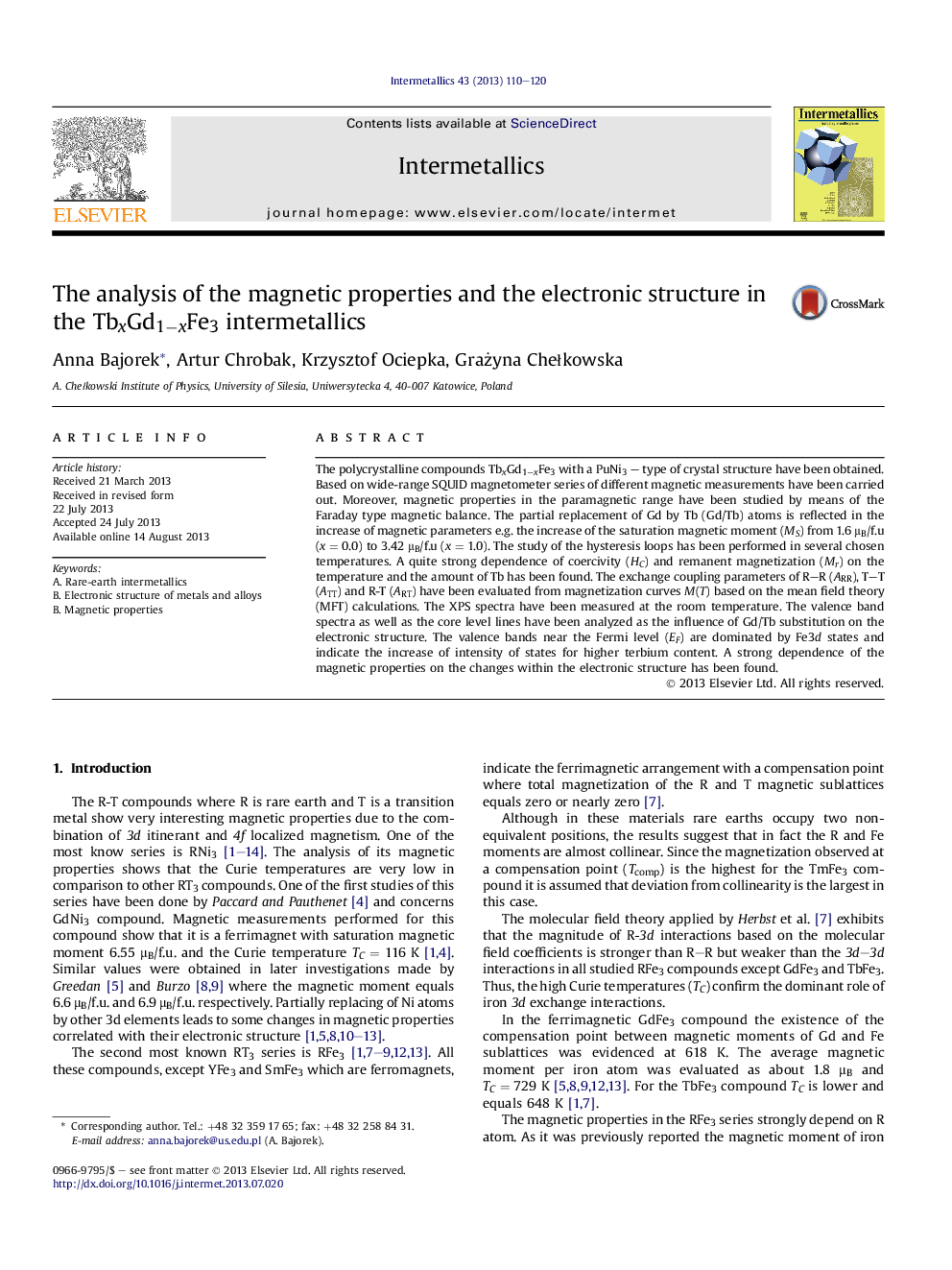| Article ID | Journal | Published Year | Pages | File Type |
|---|---|---|---|---|
| 1600204 | Intermetallics | 2013 | 11 Pages |
•TbxGd1−xFe3 crystallize in the PuNi3 structure, lattice parameters decreases with Gd/Tb.•TC(x) varies from 721 K to 655 K, Tcomp has been noticed for all compounds.•Saturation magnetic moment increases from 1.61 μB/f.u to 3.42 μB/f.u with Gd/Tb.•MFT calculations indicate a drop in ARR and ATT but an increase in ART values with Gd/Tb.•For x = 0.4 the Imax (EF) is the highest and μFe estimated from Fe3s fitting is the lowest.
The polycrystalline compounds TbxGd1−xFe3 with a PuNi3 – type of crystal structure have been obtained. Based on wide-range SQUID magnetometer series of different magnetic measurements have been carried out. Moreover, magnetic properties in the paramagnetic range have been studied by means of the Faraday type magnetic balance. The partial replacement of Gd by Tb (Gd/Tb) atoms is reflected in the increase of magnetic parameters e.g. the increase of the saturation magnetic moment (MS) from 1.6 μB/f.u (x = 0.0) to 3.42 μB/f.u (x = 1.0). The study of the hysteresis loops has been performed in several chosen temperatures. A quite strong dependence of coercivity (HC) and remanent magnetization (Mr) on the temperature and the amount of Tb has been found. The exchange coupling parameters of R–R (ARR), T–T (ATT) and R-T (ART) have been evaluated from magnetization curves M(T) based on the mean field theory (MFT) calculations. The XPS spectra have been measured at the room temperature. The valence band spectra as well as the core level lines have been analyzed as the influence of Gd/Tb substitution on the electronic structure. The valence bands near the Fermi level (EF) are dominated by Fe3d states and indicate the increase of intensity of states for higher terbium content. A strong dependence of the magnetic properties on the changes within the electronic structure has been found.
